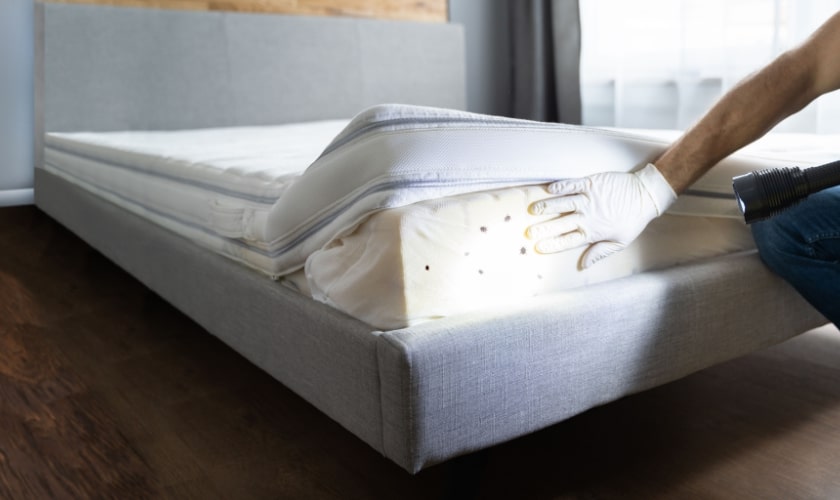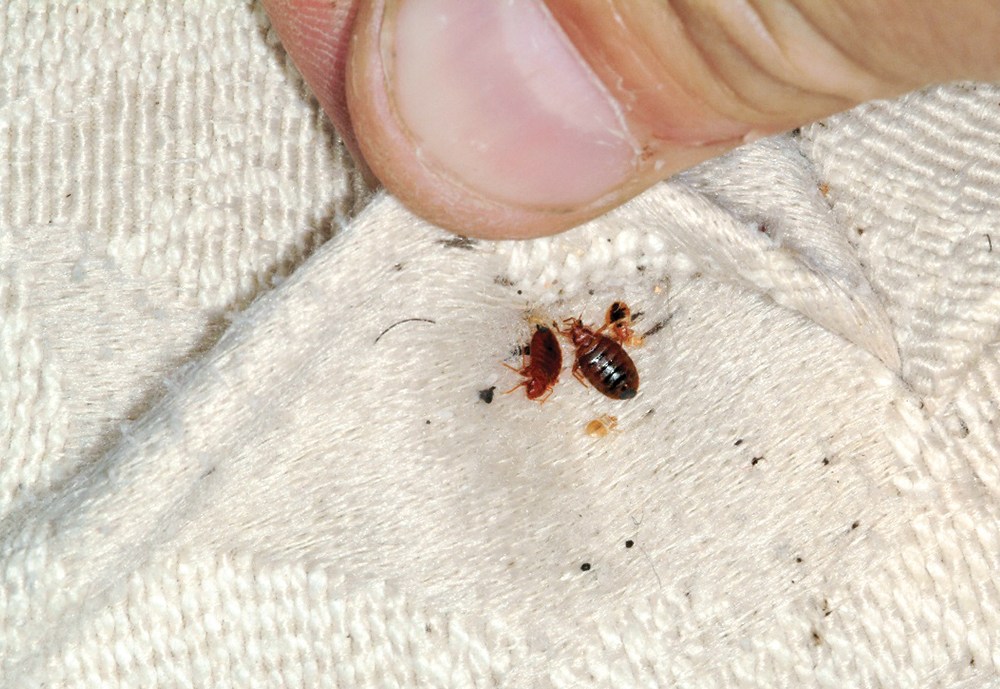Bug Control Provider Demystified: The Science Behind Removing Insects and Insects
Pest control solutions play a critical function in maintaining the health and wellness of our living and working settings. Behind the seemingly regular job of getting rid of insects lies an interesting globe of clinical concepts and techniques that drive the procedure of parasite management. From recognizing the intricate habits patterns of parasites to utilizing sophisticated innovations for their elimination, the realm of insect control operates on a structure of knowledge that extends far past just eliminating undesirable intruders. As we check out the detailed science behind insect removal, we uncover a world where chemistry, biology, and technology assemble to deal with these resistant foes.
Bug Actions Analysis
Analyzing bug actions is essential in creating effective insect control strategies for both commercial and residential settings. By comprehending the routines and patterns of insects, parasite control experts can execute targeted and reliable solutions to eradicate problems. One key aspect of parasite behavior analysis is identifying the particular variables that bring in parasites to a particular area. This might include accessibility to food sources, water, shelter, or positive environmental conditions. As an example, some parasites are drawn to areas with high moisture degrees, while others are attracted to garbage or organic matter.
In addition, researching parasite behavior helps in figuring out the most suitable approaches of pest control. In general, a complete analysis of parasite habits is crucial for creating personalized pest administration plans that are both extremely efficient and environmentally friendly.
Integrated Pest Monitoring Strategies
Integrated Insect Management Strategies involve detailed approaches that use a mix of safety nets, biological controls, and monitoring to effectively manage bug populations. Precautionary actions intend to remove aspects that bring in bugs, such as food and water resources, by applying proper cleanliness techniques. This includes securing splits and crevices, repairing leaks, and keeping food in airtight containers. Organic controls entail presenting all-natural killers or parasites to regulate pest populaces, lowering the need for chemical pesticides. Launching ladybugs to prey on aphids in a yard is a common biological control technique. Monitoring plays a critical role in Integrated Parasite Administration by frequently inspecting and identifying pest populations to establish the most suitable control techniques. By making use of a combination of these methods, bug control services can reduce the ecological influence of parasite management while efficiently lowering pest populations in a sustainable way.
Eco-Friendly Parasite Control Solutions
With a focus on sustainability and ecological consciousness, eco-friendly bug control solutions use a effective and all-natural choice to standard chemical pesticides. These techniques prioritize the usage of non-toxic components acquired from plants, minerals, or other organic resources to battle pest problems without triggering injury to the setting, people, or non-targeted varieties.
One preferred eco-friendly approach is organic bug control, which includes presenting all-natural predators, bloodsuckers, or microorganisms to manage pest populations. By taking advantage of the power of nature's own checks and equilibriums, this technique can successfully regulate insects without the demand for dangerous chemicals. Furthermore, organic chemicals originated from plants like pyrethrum, garlic, and neem have revealed pledge in repelling or eliminating parasites while staying safe for useful bugs and pets.
Moreover, green insect control services frequently concentrate on safety nets such as sealing entry factors, removing food and water resources, and keeping proper cleanliness to discourage bugs from infesting important link structures. By incorporating these lasting methods, parasite control solutions can efficiently get rid of parasites while reducing environmental influence.

Role of Modern Technology in Pest Elimination
Modern advancements in innovation have changed the field of pest removal, enhancing the efficiency and effectiveness of parasite control solutions. The integration of modern technology in insect monitoring has actually dramatically improved the precision of pest detection, enabling targeted therapy strategies. One of the essential technical devices in insect control is the usage of remote tracking devices, such as sensing units and video cameras, which assist in recognizing parasite hotspots and monitoring parasite movements. These tools supply real-time data, enabling parasite control experts to make informed choices rapidly.
Additionally, the advancement of green pesticides and baits that are much more targeted in the direction of particular parasites has been enabled through technical developments. This targeted method decreases the total use chemicals, decreasing environmental effect while effectively managing pest populations. In addition, the usage of drones for airborne surveys and targeted chemical application in hard-to-reach areas has streamlined pest control operations.

Importance of Regular Parasite Inspections
Normal parasite evaluations are essential for preserving a pest-free atmosphere and avoiding infestations from holding - philly pest control philadelphia browse around here bed bugs. By performing regular evaluations, homeowner can discover pest issues at an early stage, permitting swift and targeted interventions to remove the pests prior to they spread out and reproduce. These assessments provide a possibility to identify possible entry factors where insects can penetrate the properties, enabling positive procedures to seal these gain access to points and avoid future problems
Moreover, normal insect inspections can help guard the health and safety of occupants by guaranteeing that the atmosphere remains without disease-carrying insects and allergens. Early detection of parasites like rodents, roaches, or bed bugs can stop health risks connected with their visibility, such as allergies, contamination of food and water resources, or the transmission of diseases.
Along with securing human wellness, regular insect inspections are essential for maintaining the structural stability of buildings. Certain pests, such as termites, can trigger substantial damages to wooden frameworks if left untreated. With regular evaluations, property proprietors can identify termite infestations early and apply steps to avoid expensive structural repair work.
Final Thought

Examining parasite actions is crucial in establishing Discover More Here effective insect control techniques for both domestic and business setups.Integrated Insect Monitoring Techniques include comprehensive strategies that make use of a mix of preventative procedures, organic controls, and keeping track of to successfully handle bug populations. By using a mix of these techniques, parasite control solutions can minimize the ecological influence of pest management while properly decreasing pest populaces in a sustainable manner.
One of the essential technological tools in bug control is the usage of remote surveillance gadgets, such as video cameras and sensors, which aid in recognizing parasite hotspots and tracking parasite activities (philly pest control in philadelphia bed bugs).In conclusion, recognizing parasite habits, executing integrated bug monitoring strategies, utilizing eco-friendly services, including innovation, and performing routine evaluations are crucial parts in effectively eliminating insects